You’re no rookie. You’ve been hitting the gym (or your home gym “sanctuary”) and getting strong.
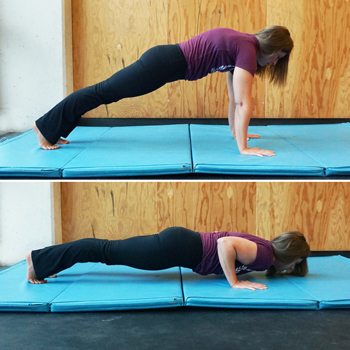 Push-ups, squats, deadlifts, pull-ups—you name it, you’ve got the basics down pat.
Push-ups, squats, deadlifts, pull-ups—you name it, you’ve got the basics down pat.
And that work you’ve put in has probably paid off in a lot of ways—prioritizing strength is a huge and vital step in living a healthier, more self-sufficient life.
But is your training helping you to move better? Is it helping you move through life with more ease, have better control over your day-to-day actions, and feel confident that your body can handle anything life throws at it? Do you feel like you can move smoothly and gracefully?
For most people, the answer is no. But it doesn’t have to be that way, and we’ll show you how.
You Should Move in Multiple Planes of Motion
Strength is an essential part of feeling confident that your body is up for the tasks it needs to be. It doesn’t really matter what your particular day looks like—it’s guaranteed that you need strength all the time in your daily life.
But too many people spend all their time on strength to the detriment of everything else.
There is such a thing as “strong enough,” even (or especially) with fundamental exercises like squats, lunges, push-ups, etc. You can be strong in those exercises and still lack good control over your body… because these exercises train only one plane of motion.
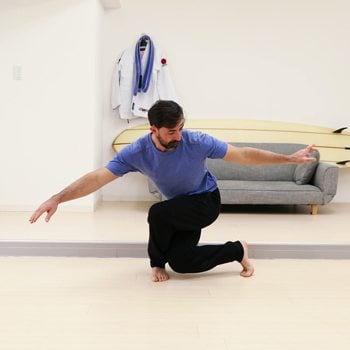 Take the squat, for example.
Take the squat, for example.
Whether you’re doing squats with or without weight, you’re moving in one track—up and down. What happens when you add other planes of motion into the mix? Can you squat down while twisting and moving sideways? Can you squat with a staggered stance while rotating toward your extended leg? How is your control when you try to change things up like that?
For most people, even very strong people who’ve been training for a while, when different planes and vectors are added in to the mix, they find their body control isn’t where they’d like it to be. All that time working in one plane of motion makes you strong, for sure, but it doesn’t necessarily translate when you need to move in a couple of different ways at once. In case you aren’t aware, you likely have some important movements missing from your current workouts.
Why does that matter?
Why You Can’t Ignore the “In-Between”
On the surface, if we’re strictly looking at a training context, you might think it doesn’t really matter if you have strength and control across multiple planes of motion. If your goal is just to add as much weight as you can to your squat, or beat the competition in your local park’s pull-up contest, then that one plane of motion is all you need.
…except, even if that’s your primary goal, you still have a life outside of training.
 From the minute you get out of bed in the morning until you go to sleep at night, you’re required to move your body through countless positions and directions that you don’t even think about.
From the minute you get out of bed in the morning until you go to sleep at night, you’re required to move your body through countless positions and directions that you don’t even think about.
You may not necessarily be clumsy, but here are a couple of examples you might be able to relate to:
- When you get out of bed in the morning, you have to go through many transitions—perhaps rolling onto your side, bending your knees, using your hand to press yourself up to a seated position, and finally, shifting from a seated position to standing.
- Have you ever had to hold a self-locking door open, then dropped your mail on the ground just slightly out of reach? And all of a sudden you have to do this combo lunge/squat/twist so you don’t lock yourself out of your apartment building? **raises hand**
It’s not just balance and coordination we’re talking about, but the fact that so many of our day-to-day actions require strength and control through many planes of motion. Not just up and down or side to side, but also combining those with rotation or diagonal movement. It’s just life!
And yet, most people spend little time training for this and building control over those “in between” positions.
Here’s more about why this is a bad idea:
👉 Get your free transitional movement cheatsheet.
If you’re just starting out (or getting back into it), of course you should spend quite a bit of time building up strength in fundamental positions and exercises. But after a certain point, you’re hitting diminishing returns on just how helpful those exercises will be for you. It can be different for everyone, but once you’re knocking out a few sets of 15 repetitions without a lot of strain, you’d benefit from moving on.
Keep those basics in your training as a nice warm-up, but after that’s done, you’ll find so much value in exploring how to move your body in different ways.
Practice Transitional Movements with Sequences
 Sequences is our transitional movement program, is specifically designed to help build control, balance, and agility across every plane of motion, so that your body is prepared to handle whatever life throws at you, as well as any sport-specific or skill-based goals you may have. That’s a crazy-long sentence, but I’m leaving it 🙂
Sequences is our transitional movement program, is specifically designed to help build control, balance, and agility across every plane of motion, so that your body is prepared to handle whatever life throws at you, as well as any sport-specific or skill-based goals you may have. That’s a crazy-long sentence, but I’m leaving it 🙂
We don’t recommend that beginners start there, because it’s essential to build up basic movement patterns first (that’s what Elements is for).
👉 Here’s more details about Sequences
Try This: 3 Ways to Get Better at the Movements In-Between
The concept of training the “in-between” is pretty novel for most people, and can seem a bit vague at first. How can you actually go about doing this? Here are 3 suggested things you can try:
1. Hang Out in Your Weak Spots
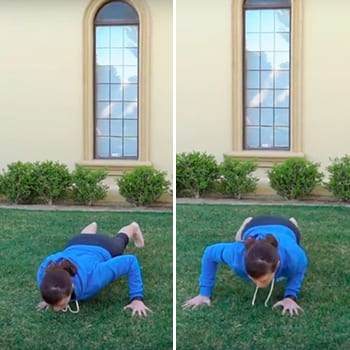 This can be an uncomfortable and rude awakening for a lot of people. Rather than rushing through the weakest part of an exercise, take some time to hang out there, move around, and explore.
This can be an uncomfortable and rude awakening for a lot of people. Rather than rushing through the weakest part of an exercise, take some time to hang out there, move around, and explore.
If you’re working on push-ups, for instance, you might find that the bottom 6 inches are the weakest for you—you have to use a lot of momentum to push yourself up from the bottom each time, but once you get past those 6 inches, you’re good to go.
So, instead of quickly pushing through that part of the exercise, spend some time in that weak spot.
Maybe push yourself up just 3 inches and hold, then shift your body forward and backward, side to side, in circles, diagonally—play around in all directions, then lower yourself back down to the ground. Work on this for a while and you’ll find find your strength and control will improve drastically in the push-up (and that’ll carry over into lots of other areas).
2. Move Around in the Squat
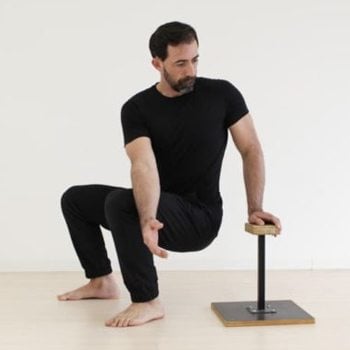 The squat is one of our favorite exercises to play around with these kinds of “in-between” movements or positions. That’s because, for one thing, getting strong and controlled in your squat means you’ll be stronger and more controlled in whatever you need to do. For another thing, it’s such a versatile exercise that can be practiced in so many different ways.
The squat is one of our favorite exercises to play around with these kinds of “in-between” movements or positions. That’s because, for one thing, getting strong and controlled in your squat means you’ll be stronger and more controlled in whatever you need to do. For another thing, it’s such a versatile exercise that can be practiced in so many different ways.
Even if you’re not able to do a deep squat right now, there’s still a lot you can work with. You can hold on to something to keep yourself from falling over, or you can even squat down onto a low stool.
Play around with squatting down then twisting your body one way and then the other. Move your knees in and out, one at a time, and then both together. Shift your weight forward and backward, then try to shift your weight all the way onto one foot, then the other.
When you’re comfortable with that, play with placing your hands on the ground in front of you, jumping your feet forward to meet your hands. Then do the same to one side and the other.
Now, try rotating as you squat down, or squatting with one foot snaked behind the other.
The possibilities are endless! (See what I mean about versatility?). No matter how you slice it, playing around with awkward positions within the squat will make you stronger and more controlled in those “in-between” positions. Which brings me to the next tip…
3. Practice Movements That Feel Awkward
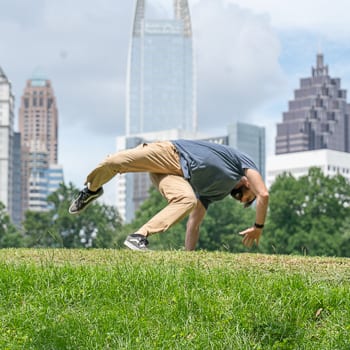 Getting into awkward or uncomfortable positions may not sound like a lot of fun, but actually, it can be just the opposite!
Getting into awkward or uncomfortable positions may not sound like a lot of fun, but actually, it can be just the opposite!
It’s of course much easier to simply repeat the things we’re good at. After all, we’ve all spent time learning and improving them. There’s a lot of mental effort and frustration when we first pick up something new, yet as we all know, that’s how we grow, both mentally and physically.
But here’s the trick: You don’t have to do something fully new every time to benefit. In fact, as we explain in our definition of Play, it’s better to take movements and abilities that you do well and explore how you can mix them up a bit.
Changing things up and doing things that you’re not used to doing is a great way to challenge your brain and body while having a lot of fun.
We just wrote a whole article with 57 ideas for bringing more unusual movement into your daily life in case you’re stumped about how to do this 😉
Making Transitional Movements Your Secret Weapon for Successful Practice
Now all this is likely not brand new information for those of you that have been involved in physical practices that require moving in a variety of, and even unexpected, ways. Dancers and martial artists especially have known for centuries that it is working on the “in-between,” the transitions between every move, that separate the dilettante from the expert.
The same is true with sports like basketball and football where you are very often not jamming forward in one straight line, and you need to quickly and creatively move off in another vector to score.
Performers, athletes, and their coaches have developed a variety of drills and exercises that emphasize these transitions. Where they see the hiccups in movement, they slow down and smooth them out, then gradually bump up the speed so that they can be executed with speed, power, and high skill.
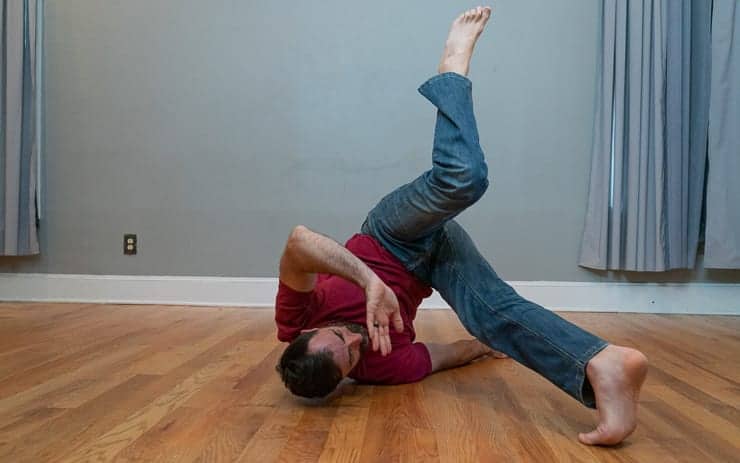
And really, you don’t have to be an athlete to have experience with this as well. If you’ve spent time learning how to play an instrument, you know that it’s the transitions between the notes that determine how good you sound. It’s more than just being fast. It’s knowing the rhythm and how to smoothly go from one chord to the next that makes a piece beautiful.
Hell, remember how we learned to write? We followed our teacher and traced the big block letters in slow motion. And then cursive writing—that’s classic transitional movement. And after so many years we got so good at it that we don’t even think of writing as a physical skill anymore.
Again, we aren’t saying that you need to stop your other fundamental training and do this exclusively. That’s silly.
Movements like basic squats, presses, and other straight line work are vitally important and you’ll do well to maintain your abilities on these. You can have dedicated days for those skills—they’re good for you! And even on “transitional movement” days, it’s a good idea to keep those basic exercises in your warm-ups. But whatever training you’re currently doing, we challenge you to pick at least one of the three strategies we described above and work them into your practice.
If you aren’t ready to do a full training session in this way, pick a set or two where you spend a few minutes on it.
To sum up:
- Find your weak spots and challenge yourself there.
- Be creative with how you squat.
- Get awkward! Choose a movement you can already do well and mix it up.
Tell yourself you’ll try this out for at least 4 sessions and we bet you’ll discover improvements in how you express your strength, as well as increased ease in some of the ways you move throughout your day.
Sequences: Movement Flow Program
If you’ve got some experience with in movement training, Sequences is our new program to help you develop more complex skills and combine them into smooth, continuous flows routines.


